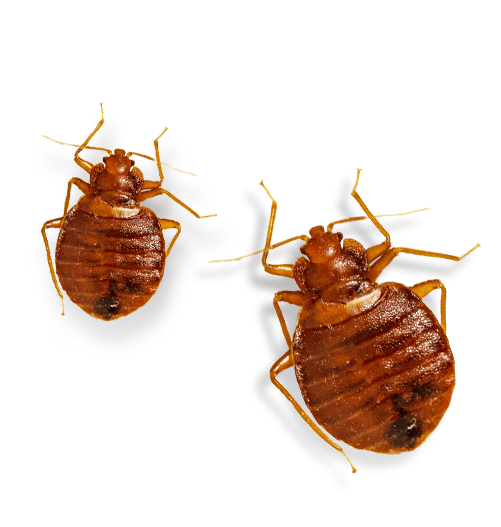Efficient Bed Bug Exterminator: DC Providers with Heat Treatment
Efficient Bed Bug Exterminator: DC Providers with Heat Treatment
Blog Article
Checking Out the Science Behind Bed Insect Heat Treatments as a Lasting Parasite Administration Strategy
In the world of pest management, the mission for reliable and lasting solutions stays a consistent quest. One such approach that has gotten grip in the last few years is using heat therapies to fight bed insect problems. By using the science behind thermal fatality factors for these persistent parasites, heat therapies offer an appealing choice to conventional chemical-based techniques. The intricacies of exactly how warmth effectively eliminates bed bugs and the wider effects for sustainable insect administration techniques make this a subject worth exploring better.
Bed Insect Warmth Treatment Process

Thermal Death Point for Bed Bugs
Subjecting bed bugs to elevated temperature levels beyond their thermal tolerance range is crucial for attaining efficient eradication in heat therapy processes. By reaching and preserving temperatures over the thermal death point for bed pests, bug monitoring specialists can make certain extensive removal of bed bug populaces, including hard-to-reach locations where chemical treatments might be less reliable. Understanding the thermal death factor for bed insects is vital for executing successful heat therapy methods and achieving sustainable bug administration outcomes.
Advantages of Heat Treatments
Having developed the important thermal death point for bed pests, it is vital to currently check out the substantial advantages that warmth treatments use in efficiently eliminating these durable insects. Warm therapies present a number of vital benefits when compared to conventional chemical approaches. One of the key advantages is that warm can pass through deep into splits and holes where bed pests conceal, guaranteeing that even the most hard-to-reach locations are heated up to deadly temperatures. This comprehensive strategy not just eliminates online pests yet likewise targets bed pest eggs, stopping future problems.
Moreover, heat therapies are non-toxic and eco-friendly, making them a lasting insect monitoring method. Unlike chemical this hyperlink pesticides, warm get more therapies do not leave dangerous deposits that can posture threats to human wellness or the setting. This aspect is specifically important in delicate settings such as health centers, institutions, and suburbs where chemical usage might not be desirable.
Furthermore, warmth therapies have a high success rate in eliminating bed insect problems in a solitary therapy, lowering the requirement for several visits and decreasing interruption to passengers. This performance not only saves money and time but additionally provides comfort to those dealing with bed pest troubles.
Efficiency of Heat Therapy

Warm therapies have actually the included advantage of killing bed insect eggs, which are frequently resistant to traditional chemical therapies. Generally, the effectiveness of warm therapies in removing bed pest invasions explanation makes them a reliable and lasting insect management approach.
Lasting Pest Monitoring Conveniences
Executing lasting pest administration techniques uses long-term benefits for both the environment and public health and wellness. By using approaches such as warm therapies for insect control, we can lower the dependence on hazardous chemical pesticides that can have negative results on ecological communities and human health and wellness - bed bug treatment. Sustainable bug management methods help in protecting biodiversity by targeting details pests without harming non-target organisms, thus preserving a balanced environment
Furthermore, lasting pest management methods add to the overall health and wellness of the public. By decreasing direct exposure to poisonous chemicals used in conventional bug control methods, heat therapies give a safer choice for parasite monitoring in property, commercial, and public spaces. This decrease in chemical use additionally helps in avoiding pesticide residues from contaminating dirt, air, and water, guarding environmental top quality.
Conclusion
Finally, bed pest warmth therapies have been shown to be a efficient and lasting insect monitoring strategy. The thermal fatality factor for bed bugs makes them prone to warm therapies, which have numerous benefits over typical chemical treatments. The efficiency of warm treatments in removing bed insect infestations while decreasing ecological influence highlights the potential of this method as a lasting remedy for parasite control.
The bed pest warm treatment process entails raising the temperature within plagued locations to a level that effectively removes bed bugs and their eggs. By getting to and maintaining temperature levels above the thermal fatality factor for bed bugs, pest management professionals can make sure comprehensive removal of bed insect populaces, consisting of hard-to-reach locations where chemical treatments may be less efficient. One of the main benefits is that warmth can penetrate deep into crevices and splits where bed pests conceal, making certain that also the most hard-to-reach locations are heated up to lethal temperature levels. Unlike chemical treatments that might leave behind resistant populaces, heat treatments use a non-toxic and environmentally friendly service that can penetrate deep into furniture, wall surfaces, and other hard-to-reach locations where bed insects hide.
The thermal death factor for bed insects makes them at risk to warmth treatments, which have various advantages over typical chemical therapies.
Report this page